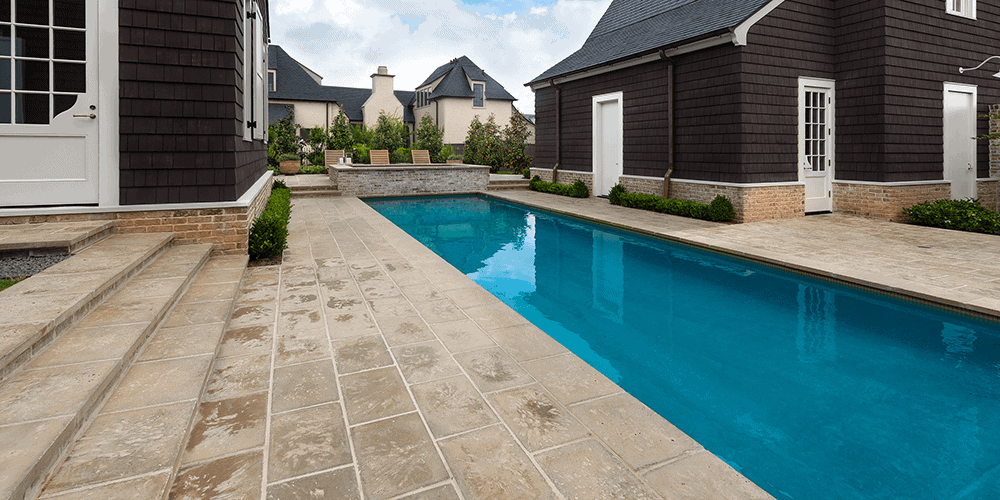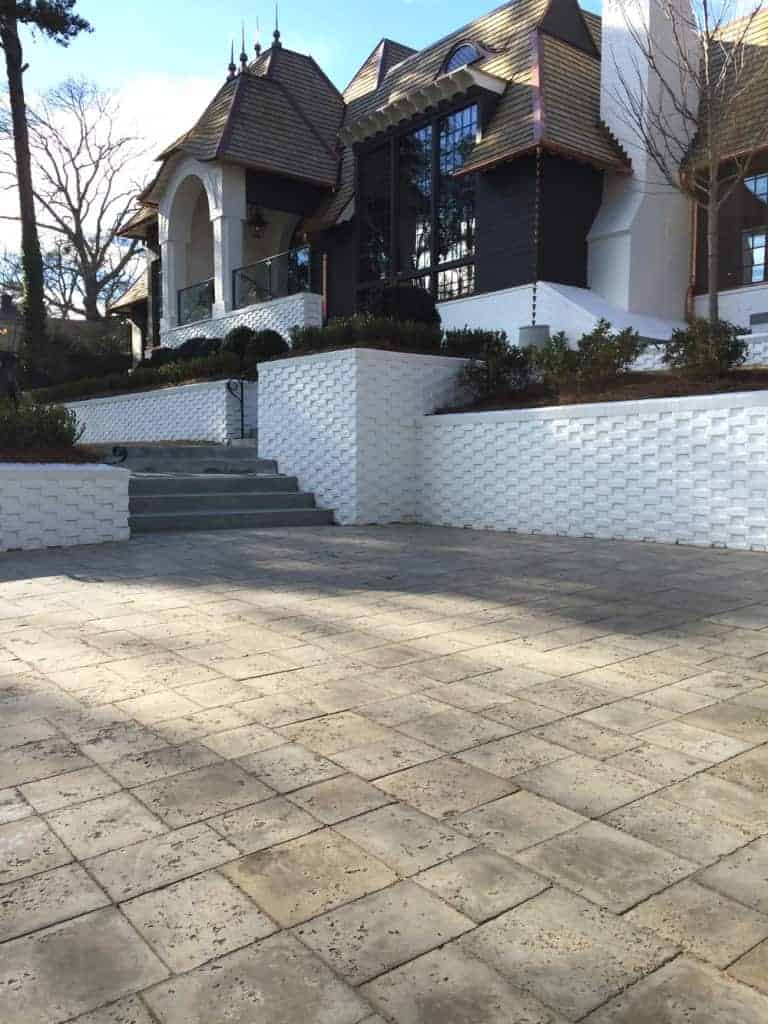When choosing hardscaping for your driveway, pool deck, patio, or garden, there are typically two options that involve concrete — poured concrete slabs and concrete pavers. In this article, we’ll explain how they differ and identify which material offers the greatest value for hardscapes and landscapes.
Poured Concrete vs Concrete Pavers for Outdoor Spaces
Before we get into the cost discussion, let’s first walk through the differences between poured concrete and concrete pavers.
Poured concrete slabs are large concrete surfaces that are poured as wet concrete mixes onsite and left to cure as a single slab. They are one of the most common methods for constructing concrete driveways. Sometimes a concrete slab is stamped with a tile-like pattern while it is still wet; this is called “stamped concrete.”
Concrete pavers come in many different shapes, sizes, and colors, and can be arranged in various patterns. Pavers are not poured like slabs; they arrive dry and ready to install. There are two types of concrete pavers — interlocking pavers, which are incredibly thick and sturdy enough for driveways and parking pads, and architectural pavers, which are thinner but ideal for landscaping and interior flooring.
Which Concrete Paving Option is More Cost-Effective?
Now that you know the differences between the two options, which one is more cost-effective? Poured concrete or concrete pavers? To answer this question, it is important to not only examine the initial costs of both, but also the long-term costs of maintaining each surface.
As far as installation costs and concrete costs go, poured concrete is technically the most affordable per square foot. However, even though the upfront cost of pavers is higher, concrete pavers offer greater value and durability than poured concrete and stamped concrete. This ultimately means that concrete pavers are the most cost-effective option overall.
Why exactly do concrete pavers offer the greatest value in the long run? Let’s dig a little deeper.
The Problem with Poured Concrete and Stamped Concrete Slabs
Although installing concrete pavers technically costs more money than pouring concrete slabs, the truth is that poured concrete slabs come with higher costs overall when you take into account the repairs they require over their lifespan.
Poured concrete slabs will crack when presented with encroaching tree roots, freezing and thawing cycles, and other disturbances in the ground underneath. When a concrete slab cracks or shifts, there’s not much you can do to repair it seamlessly other than patching it or replacing the entire slab, which can be incredibly costly.
Why Concrete Pavers Are More Cost-Effective
Although concrete pavers cost more upfront, they are significantly more durable and flexible than poured concrete. Concrete pavers are individual pieces, which make the overall paver pattern more flexible and accommodating of fluctuations in the ground when dry set. Pavers are also more resistant to damage caused by freeze/thaw cycles.
Affordable Concrete Pavers by Peacock Pavers
Peacock Pavers’ handcrafted concrete pavers have the look of natural stone and come in a wide variety of shapes, sizes, and colors to meet the aesthetic vision you have for your hardscapes and outdoor living spaces.
To learn more about using handcrafted concrete pavers by Peacock Pavers in an upcoming project, we invite you to request a quote, get a sample kit, or call us today at 800.264.2072.
 |
| 


You must be logged in to post a comment.